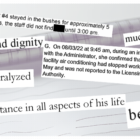2024 election
Progressives going after incumbents in hot Democratic primaries
|
It’s a safe bet Democrats will barrel into 2025 with their supremacy intact at the New Mexico Legislature. Barring an unexpected shock during this year’s elections, Democrats’ stranglehold on power is assured.Going into the 2024 contests, Democrats control nearly two-thirds of all seats in the House and nearly three of every five seats in the Senate.The question going into the June primary election is whether the party’s progressive wing will continue to increase power in the Legislature or will more centrist Democrats hold ground. This year’s effort by progressives is the latest in a long standing campaign, stretching back to the mid-2000s, to bring more progressives into the Legislature. In 2008, progressives successfully replaced a slate of centrist Democrats with newly minted candidates who are now political veterans, including the launch of current Albuquerque Mayor Tim Keller’s political career, who joined the Senate that year.
Because of this one-party dominance, the ideological fault lines within the Democratic Party have major policy implications on abortion, the environment, education and workplace issues like minimum wage and paid family and medical leave benefits.
Progressive political candidates and committees have raised tens of thousands of dollars for bids to oust certain Democratic legislators in June’s primary election.
New Mexico’s progressive political machine was buoyed dramatically in 2020 when insurgents unseated long-time Democratic incumbents viewed as more centrist or right of center. The first campaign finance reports filed April 8 show progressive insurgents amassing thousands in contributions from individuals. And the efforts of progressive independent expenditure committees will undoubtedly benefit their campaigns.
Incumbents hold an advantage in corporate money, with energy, healthcare and hospitality interests giving big.








